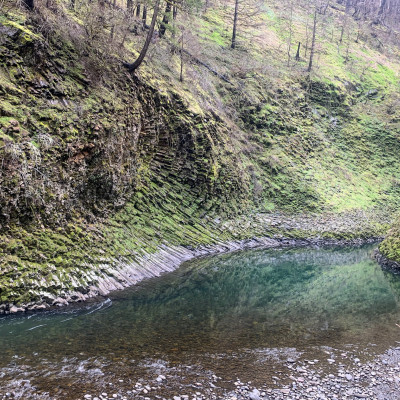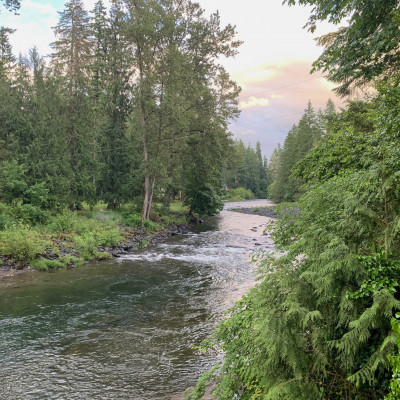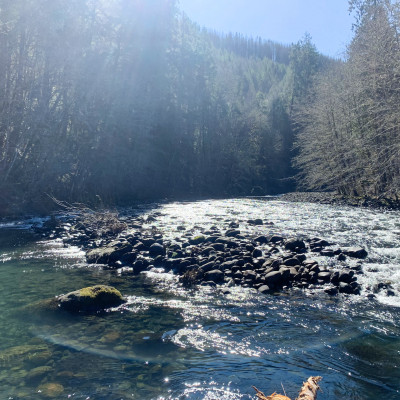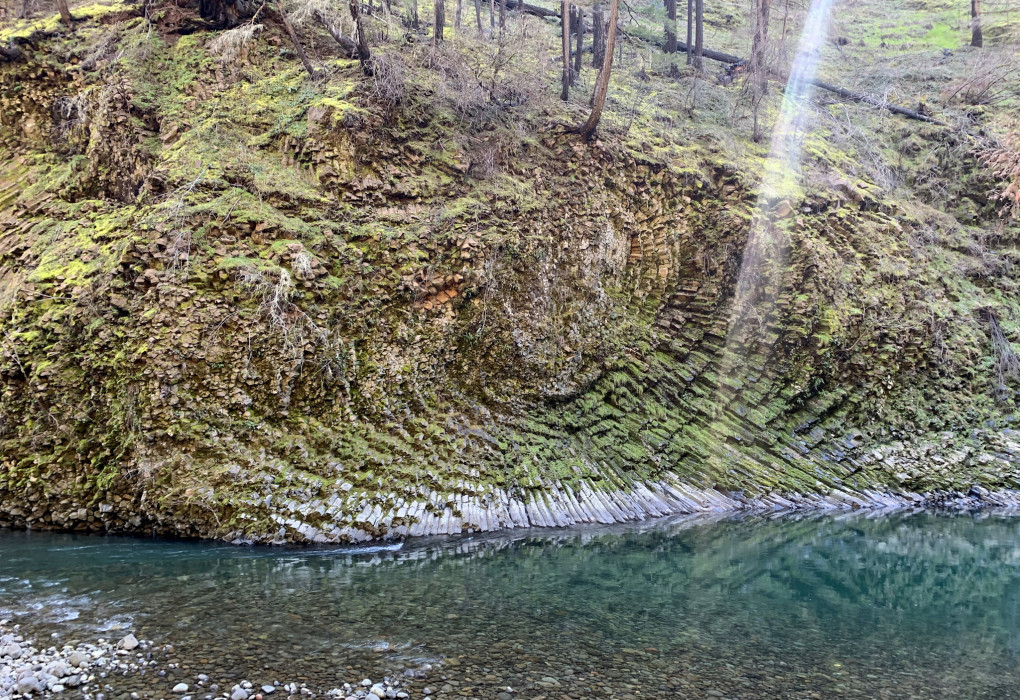Molalla River Restoration - PART I: Background
*Note: This is Part One of a Four Part Series. See other published Parts at the bottom of the page.
Standing atop a rocky outcropping, I spot several spring Chinook spawning in the shadow of the spiral columnar basalt formation known as “the Eye of the Molalla.” An ESA-listed species spawning in beautiful blue-green waters are a welcome sight, but look a little deeper, and the myriad problems the Molalla is facing become as clear as the water flowing through its banks.
The Molalla River is a special place. It is the only major undammed east side tributary of the Willamette, and its location just upstream of Willamette Falls makes it the first place the upper Willamette wild winter steelhead (there are no hatchery fish in the Molalla), spring Chinook, and Pacific Lamprey can call home. In addition to hosting anadromous species, the Molalla is also home to coastal Cutthroat Trout and many other native minnow species.
Logging, mining, fur trapping, and agriculture all took off in the Molalla River watershed shortly after European settlement of the area. Logging removed the store of large trees from the watershed that serve as a reservoir for future inputs of large wood to the river and its tributaries. Often, logs were transported downstream through the use of splash dams, which scoured the river to bedrock and drove channelization. In addition, instream large boulders and wood were usually removed with dynamite to make downstream log transport easier. Miners also removed wood, altered the streambed, and channelized the river. These disturbances have resulted in a river that has much less large wood than it naturally should, reducing channel complexity and the availability of quality fish habitat.
I witnessed one of the biggest consequences of this lack of instream large wood last fall, when I joined a team from the Oregon Department of Fish and Wildlife in a spring Chinook spawning survey. In the more than half-mile reach of the upper mainstem I surveyed, I only saw one redd. But then again, there was only one small deposit of suitable spawning material in the entire reach. The rest of my survey consisted of riverbed made up of large cobble, boulders, and bedrock. And notably, no instream large wood. The rest of the crew reported similar findings across multiple miles of surveyed river. There’s plenty of good spawning gravel entering the river, but without large wood to help hold it, it just gets washed downstream in high-flow events.
The long history of abuse faced by the Molalla River was brought out in high relief following the catastrophic fires of 2020. The Beachie Creek Fire topped the ridge dividing the Molalla and Santiam watersheds, while the Riverside Fire came over from the Clackamas and burned the headwaters of some of the downstream tributaries of the Molalla. All in all, about 60% of the Molalla River watershed burned in 2020. But from this great tragedy, an amazing opportunity presented itself: the state legislature had put together a fire recovery package for restoring watersheds burned in 2020. Ironically, the fires that burned the Molalla might offer its best chance for recovering habitats that have been degraded for over 100 years.
*This is Part I of a four-part series of the restoration efforts on the Molalla River. Additional parts will be posted over the next couple of weeks. Stay tuned!



